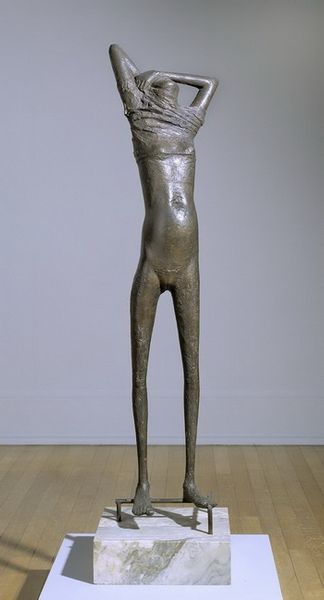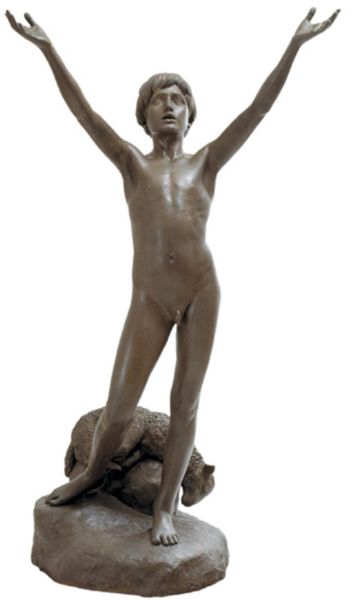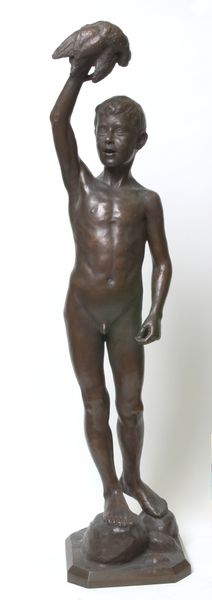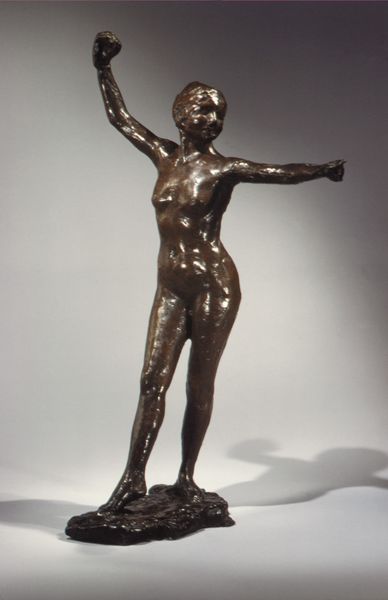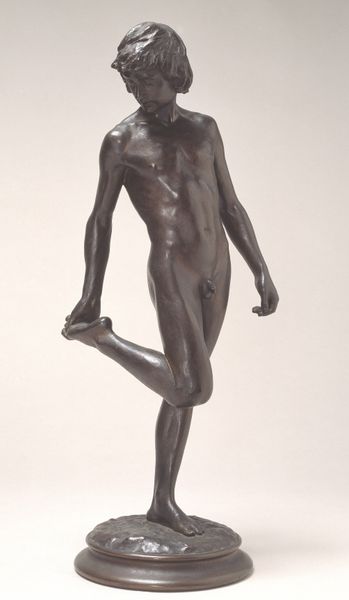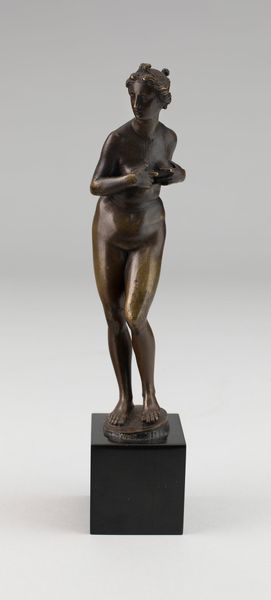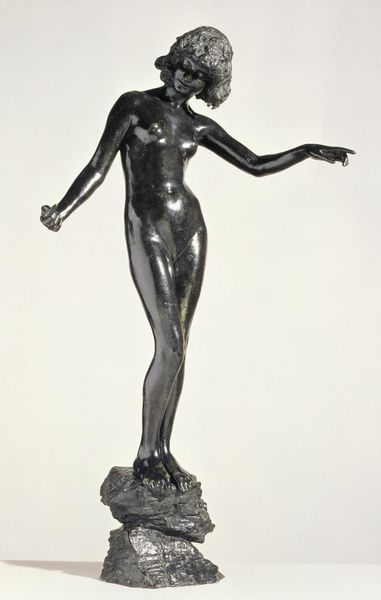
Dimensions: object: 1760 x 522 x 465 mm, 118 kg (Gross 241kg)
Copyright: © Leonard McComb | CC-BY-NC-ND 4.0 DEED, Photo: Tate
Curator: Leonard McComb's "Portrait of a Young Man Standing" at the Tate is a striking life-sized sculpture. Editor: The gilded surface is immediately arresting; it gives the sculpture an almost Byzantine grandeur. I'm curious about the process of applying the gold leaf. Curator: The application serves to abstract the figure. Its material presence overwhelms any narrative concerns; it's form speaking directly to us through its sheer visual impact. Editor: But the gold begs questions. Was it about the value of the gold itself, its preciousness, or a reflection on the young man? Curator: I would say the effect is not mimetic but iconic, pointing to fundamental questions of human representation. Editor: To me, it is the use of gold that makes us question the economics and labor involved in its production. Curator: It's truly an object that demands our attention to pure form and its golden materiality. Editor: I think I agree. This is an art that sparks curiosity about both surface and substance.
Comments
tate 7 months ago
⋮
http://www.tate.org.uk/art/artworks/mccomb-portrait-of-a-young-man-standing-t07466
Join the conversation
Join millions of artists and users on Artera today and experience the ultimate creative platform.
tate 7 months ago
⋮
At either end of the Duveen Galleries you can see a sculpture made in response to events during the Cold War. Of particular significance was the civil war in Vietnam (1954-75), the most famous and most bloody of several ‘proxy wars’ fought between western powers and Communist regimes. Each artist addressed that situation in very different ways. Though this gilded version of Leonard McComb’s Portrait of a Young Man Standing was made in 1983, the original version was completed in 1963. Its development was set against the backdrop of the Cold War: specifically, the rapid succession of the Cuban Missile Crisis (1962), President Kennedy’s assassination (1963) and the escalation of war in Vietnam. Concerned by these demonstrations of humankind’s destructive potential, McComb conceived the sculpture as a positive image of humanity. He has described it as an attempt ‘to create an image of a whole person, his physical and spiritual life being inseparably fused [and implying] the embedded capacity for powerful and gentle action, both physical and intellectual’. Later, McComb’s continuing concerns about the Cold War were combined with a sense that the individuality and inner life of people were being subjugated in the modern world. Gallery label, February 2010




